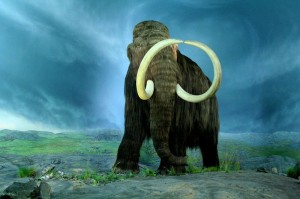Mammoth Effort: Scientists Turn to Ice Age Species to Develop Artificial Blood for Humans
By Lia Steakley, Social Media Producer, Stanford University School of Medicine
Woolly mammoths, which initially evolved in warm climates where African and Asian elephants now live, migrated to the cold regions of Eurasia in the Pleistocene glacial period. To survive living in the harsh permafrost, the Ice Age icons underwent distinct evolutionary changes such as growing long fur.
In examining the woolly mammoth’s genetic make-up, scientists discovered a blood protein that carries oxygen from the lungs to the rest of the body in the woolly mammoth has mutations in its DNA that make it different from that of its Asian elephant cousins. Scientists believe the mutation helped woolly mammoths survive freezing temperatures and could serve as a blueprint for creating artificial blood products for modern medical procedures that involve reducing patients’ body temperature. According to a Biochemistry release:
[Scientists] didn’t have a woolly mammoth blood sample, so they made the hemoglobin protein in the laboratory by using fragmented DNA sequences from three mammoths that died in Siberia between 25,000 and 43,000 years ago. Compared to hemoglobin from Asian elephants and humans, the woolly mammoth protein was much less sensitive to temperature changes, which means it can still easily unload oxygen to tissues that need it in the cold, whereas the other hemoglobins can’t. This is likely due to at least two of the mutations in the woolly mammoth hemoglobin gene. These insights could lead to the design of new artificial blood products for use in hypothermia induced during heart and brain surgeries.

